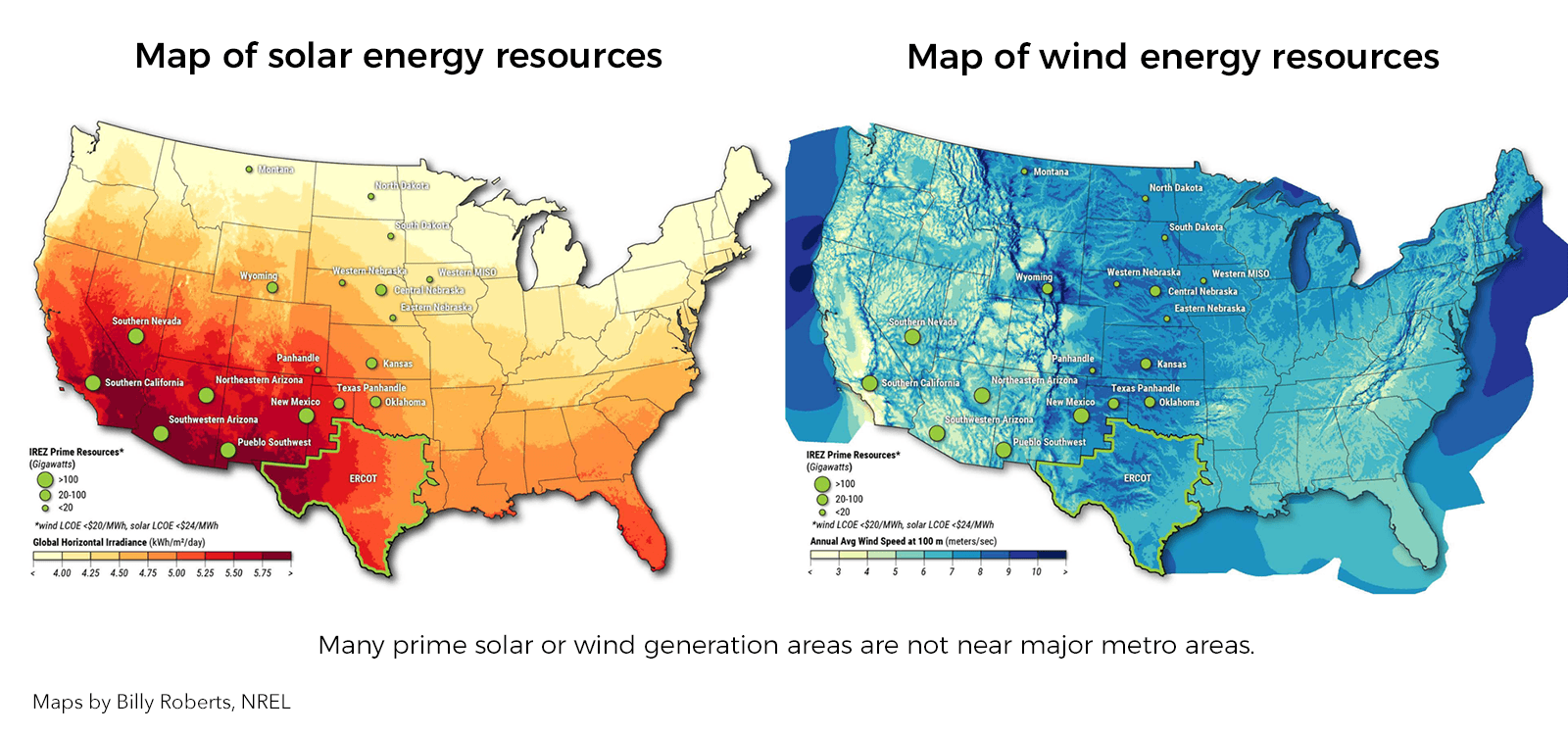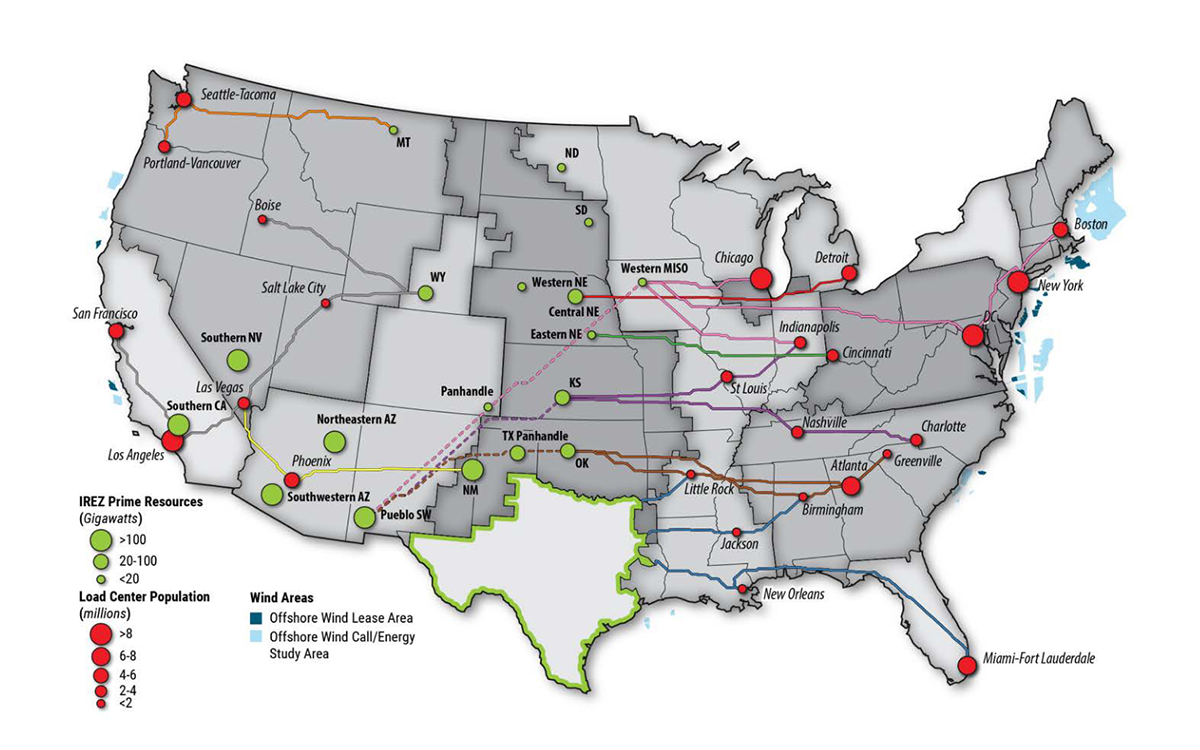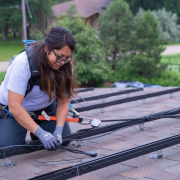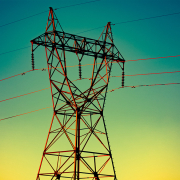New Approach to Transmission Planning Links Renewable Energy Zones to Major Cities
Researchers at the National Renewable Energy Laboratory (NREL) and the Pacific Northwest National Laboratory (PNNL) have developed a new approach to grid planning that could make it possible to power your home or business with the nation’s best and lowest-cost wind and solar energy, no matter where you live.
Their effort is part of the Department of Energy’s “Building a Better Grid” initiative that seeks to drive nationwide development of new and upgraded high-capacity electric transmission lines.
NREL and PNNL studied the economics of building long-distance, high-voltage transmission lines that are anchored to interregional renewable energy zones (IREZs), or areas with very high concentrations of the lowest-cost developable renewable energy potential. The envisioned transmission lines would cross hundreds of miles and link the nation’s best renewable energy resources to the biggest load centers (i.e. large metropolitan areas). Based on the NREL analysis, the IREZ approach could save money overall, help keep the lights on, while supporting decarbonization of the nation’s electric grid.
Connecting Renewable Energy Generation to Communities That Need Power Resources
Today, almost all transmission lines are local or regional; they were originally designed to bring power from power plants to nearby communities. But most of the nation’s best wind and solar resources are located hundreds of miles away from areas with lots of electricity demand.
For this study, NREL modeled 20 IREZ scenarios focusing on cost, reliability, and electricity rate impacts. Nearly all wind IREZ regions are in the Midwest, and all solar IREZs are in the Southwest. IREZs provide the potential to optimize energy generation costs, with costs per kilowatt-hour less than that of wind and solar elsewhere. Each zone in the NREL model contains an IREZ hub, where transmission substations collect power from various renewable energy plants and connect them to bulk power systems. Power from an IREZ is sent along high-voltage direct current transmission paths across state lines to major load centers (pictured in red below).
Using IREZ transmission planning, low-cost renewable electricity could be sent from areas like southern Wyoming—which has one of the highest wind energy potentials in the country—to cities like Salt Lake City, Las Vegas, and Los Angeles. Many of the modeled IREZ corridors already have high-voltage transmission projects that are either in advanced planning stages or are already under construction. Additionally, many of the IREZ corridors were modeled in areas identified in the U.S. Department of Energy’s (DOE’s) Grid Deployment Office’s National Transmission Needs Study that need deployment to meet future demand, generation, and reliability needs.
Read the full report on Interregional Renewable Energy Zones to learn more about the NTP Study and NREL’s energy analysis and grid research.






